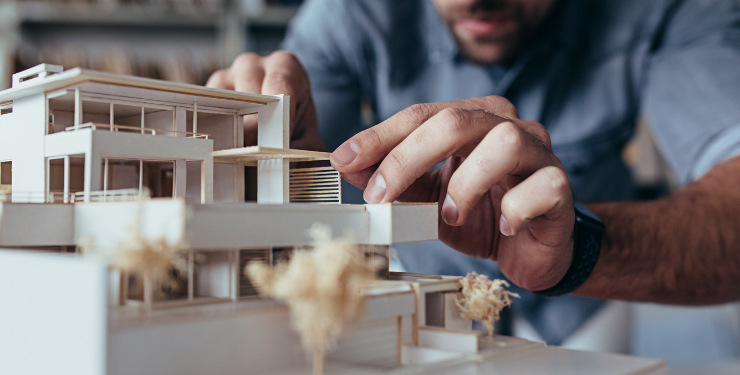The United Arab Emirates (UAE) is a nation rich in cultural heritage and historical significance, encompassing a diverse range of traditions and customs. This cultural tapestry has a profound impact on various art forms, including model making. Model making in the UAE is not only an artistic expression but also a means to preserve and celebrate the country’s cultural identity. This article explores how the UAE’s diverse cultural heritage influences model making techniques and designs, highlighting the integration of traditional elements into modern practices.
Traditional Craftsmanship:
The UAE’s cultural heritage is deeply rooted in traditional craftsmanship, where intricate handiwork and attention to detail are valued. These skills are often passed down through generations, and model making UAE serves as a continuation of this legacy. Artisans draw inspiration from ancient architectural styles, traditional motifs, and cultural artifacts to create models that reflect the nation’s heritage. Whether replicating historical buildings or traditional boats, the influence of traditional craftsmanship is evident in the precision and craftsmanship of these models.
Architectural Diversity:
The UAE is home to an array of architectural wonders, from ancient forts and palaces to modern skyscrapers and futuristic structures. The country’s architectural diversity inspires model makers to explore various design techniques and materials. For instance, models of iconic landmarks like the Burj Khalifa or Sheikh Zayed Grand Mosque incorporate a blend of traditional materials like wood and clay with modern materials like steel and glass, representing the evolution of UAE’s architecture over time.
Islamic Art and Calligraphy:
Islam plays a central role in the UAE’s cultural heritage, and Islamic art and calligraphy are prominent features in model making. Traditional Islamic geometric patterns and intricate calligraphy are often incorporated into models of mosques, minarets, and cultural centers. The graceful curves and Arabic inscriptions add a touch of elegance and spiritual significance to these models, reflecting the profound influence of Islamic art on the country’s aesthetics.
Maritime Heritage:
The UAE’s history is deeply intertwined with the sea, and its maritime heritage has left an indelible mark on model making. Traditional dhows, sailing ships, and fishing boats are frequently recreated in models, paying homage to the country’s seafaring past. The intricate details on these models depict the traditional methods of boat construction, showcasing the significance of maritime culture in the UAE.
Nomadic Culture and Tents:
Before the UAE’s rapid urbanization, Bedouin culture and nomadic lifestyle were prevalent. Traditional tents (known as “Arish”) were essential shelters in the desert. Model makers often incorporate representations of these tents in their work, keeping the memories of the nomadic lifestyle alive. The intricate models showcase the simplicity and functionality of the nomadic architecture, preserving a part of UAE’s cultural heritage.
Folk Dances and Performances:
Folk dances and traditional performances are vibrant expressions of UAE’s cultural diversity. Model makers capture the spirit of these performances by creating dioramas that depict dance troupes, musicians, and traditional festivities. The models come alive with the vibrant colors of traditional costumes and intricate poses, showcasing the liveliness of UAE’s cultural celebrations.
Emirati Costumes and Jewelry:
Emirati costumes and jewelry hold cultural and social significance, and they are often featured in model making. Models of traditional Emirati clothing, like the Kandura for men and Abaya for women, exemplify the cultural pride associated with these garments. Additionally, intricate models of traditional gold and silver jewelry celebrate the country’s history of craftsmanship and wealth.
Heritage Villages:
The UAE’s heritage villages are living museums that portray the traditional way of life. Model makers recreate these heritage villages in intricate detail, reflecting the unique architectural styles, handicrafts, and social customs of each region. These models serve as educational tools, enabling people to learn about their roots and appreciate the diversity of their heritage.
Falconry and Camel Racing:
Falconry and camel racing are traditional sports that hold immense cultural importance in the UAE. Model makers often depict scenes from these activities, capturing the elegance of falcons and the grace of camels in their models. These representations serve as a reminder of the deep-rooted connection between the people and the natural environment.
Conclusion:
The UAE’s diverse cultural heritage is a wellspring of inspiration for model makers in the country. From traditional craftsmanship and architectural diversity to Islamic art and nomadic culture, the influence of the nation’s cultural identity is evident in every detail of these models. By integrating their heritage into model making, Emirati artisans celebrate their roots, preserve their cultural legacy, and pass down their traditions to future generations. Through the medium of model making, the UAE continues to showcase the beauty and richness of its cultural heritage to the world.











